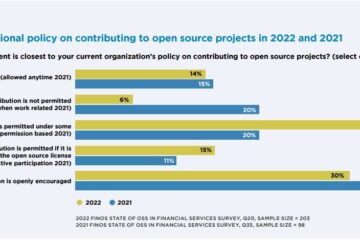
Source: Image by Jema stock on Freepik
Introduction
In today’s data-driven world, businesses generate and store an enormous amount of data every day. Data is the backbone of every business and is critical to making informed decisions.
However, as the data grows, the database management systems are subjected to a significant amount of load, leading to the system’s slow down or even crashing.
Load balancing is an effective technique that can help distribute the load across multiple servers, ensuring that the database can handle the increased demand without slowing down or crashing.
In this blog post, we will explore the concept of load balancing in database management systems, its importance, and its various aspects.
What is Load Balancing?

Source: Image by Grommik on Freepik
Load balancing is a technique that distributes the workload across multiple servers to prevent any one server from being overloaded. In a database management system, load balancing can be achieved by distributing the queries across multiple servers.
This approach ensures that each server handles only a fraction of the total workload, resulting in improved performance, scalability, and availability.
Load balancing is essential for ensuring that a database management system can handle high volumes of data with ease.
By distributing the workload across multiple servers, load balancing ensures that the system can handle the increased demand without slowing down or crashing, providing uninterrupted access to the data.
Types of Load Balancing
There are two types of load balancing techniques: hardware-based and software-based.
Hardware-based load balancers are custom-designed physical devices installed between the security system and the server infrastructure. They are known for their high throughput, low latency, and advanced features such as SSL (Secure Sockets Layer) offloading and DDoS (distributed denial of service) protection.
Software-based load balancers are virtual appliances that run on standard hardware, installed on servers or in virtual machines. They are known for their flexibility and ease of deployment on existing infrastructure, making them a cost-effective choice that can be easily scaled up or down depending on demand.
The choice between hardware-based and software-based load balancers depends on the specific needs of the organization and its IT infrastructure.
Hardware-based load balancers are ideal for high-performance and high-budget environments, while software-based load balancers are a better choice for smaller or more dynamic environments.
Load Balancing Algorithms

Source: Image by Starline on Freepik
Load balancing algorithms determine how the workload is distributed across servers.
There are several load balancing algorithms available, including round-robin, least connections, IP hash, and weighted round-robin:
1. Round Robin: Requests are distributed across the group of servers sequentially.
2. Least Connections: A new request is sent to the server with the fewest current connections to clients. The relative computing capacity of each server is factored into determining which one has the least connections.
3. Least Time: Sends requests to the server selected by a formula that combines the fastest response time and fewest active connections. This algorithm is exclusive to NGINX Plus.
4. Hash: Distributes requests based on a key you define, such as the client IP address or the request URL. NGINX Plus can optionally apply a consistent hash to minimize redistribution of loads if the set of upstream servers’ changes.
5. IP Hash: The IP address of the client is used to determine which server receives the request.
6. Random with Two Choices: Picks two servers at random and sends the request to the one that is selected by then applying the Least Connections algorithm (or for NGINX Plus, the Least Time algorithm if configured to do so).
Benefits of Load Balancing
Load balancing provides several benefits to organizations, including:
- Improved System Performance
- Scalability
- Availability
By distributing the workload across multiple servers, load balancing ensures that the system can handle the increased demand without slowing down or crashing. This provides uninterrupted access to the data, improving the overall user experience.
Load balancing also makes it possible for organizations to scale their systems as their data grows.
By adding more servers to the system, organizations can distribute the workload across multiple servers, ensuring that the system can handle the increased demand without slowing down or crashing.
Cloning And Its Importance in Load Balancing Configuration for High Availability

Source: Image by GarryKillian on Freepik
Cloning is the process of creating an exact copy of a server or database instance.
In the context of load balancing, cloning is important for achieving high availability. By cloning servers, an organization can ensure that there are multiple instances of the database available to handle the workload.
If one server fails, the cloned server can take over, ensuring that the system remains available and accessible to users.
Cloning can be achieved through various methods, including physical cloning and virtual cloning.
Physical Cloning Vs Virtual Cloning
Physical cloning involves creating a copy of the server using physical hardware, while virtual cloning involves creating a copy of the server using virtualization technology.
Cloning is an essential part of load balancing configuration for high availability. By ensuring that there are multiple instances of the database available to handle the workload, organizations can ensure that their critical data is always available and accessible to their users.
This improves the overall user experience and ensures that the organization can meet its data needs, no matter how large the workload.
Software Load Balancers vs Hardware Load Balancers: Which is Better for Your DB System?

Source: Image by rawpixel.com on freepik
When it comes to load balancing in database management systems, there are two types of load balancing techniques: software-based and hardware-based.
Both techniques have their pros and cons, and choosing the right one for your organization depends on your specific needs and workload requirements.
Software-Based Load Balancers
Software-based load balancers involve using software to distribute the workload across servers.
Using software is more flexible and cost-effective than hardware-based load balancing but may not offer the same level of performance.
Software-based load balancers are ideal for smaller or dynamic organizations that do not have the budget or for larger organizations.
They are also suitable for organizations that need to balance the workload across cloud-based servers.
Hardware-Based Load Balancers
Hardware-based load balancers involve using a dedicated hardware device to distribute the workload across servers.
Hardware is more expensive than software-based load balancing but offers better performance and scalability.
Hardware-based load balancers are ideal for organizations that handle big data and require high performance and scalability.
They are also suitable for organizations that need to balance the workload across on-premises servers.
Which is Better?
The choice between software-based and hardware-based load balancing depends on your organization’s specific needs and workload requirements.
If you are a smaller organization with a limited budget and workload, a software-based load balancer may be the best option for you.
If you are a larger organization with a high workload and need for performance and scalability, a hardware-based load balancer may be the best option.
It is important to consider the total cost of ownership, including maintenance and support, when choosing between software-based and hardware-based load balancing.
Additionally, it is important to consider your organization’s future growth and scalability needs when making the decision.
A Closer Look at Clustering in DB Systems: Standard Vs Enterprise Clustering
Clustering is a technique used in database management systems to improve availability and performance by grouping multiple servers together.
Standard clustering involves grouping servers together for failover purposes, while enterprise clustering involves grouping servers together for performance and scalability.
Advantages And Disadvantages of Standard and Enterprise Clustering
The advantages of standard clustering include improved availability and failover capabilities, while the advantages of enterprise clustering include improved performance and scalability.
The disadvantages of standard clustering include limited scalability and performance, while the disadvantages of enterprise clustering include increased complexity and cost.
Best Practices for Implementing and Managing Load Balancers

Source: Image by rawpixel.com on Freepik
Implementing and managing load balancers in database management systems requires careful planning and execution.
Here are some best practices to ensure that load balancers are implemented and managed effectively:
- Define Your Goals
Before implementing load balancers in your database management system, define your goals.
Determine what you want to achieve with the load balancer, such as improved system performance, scalability, and availability. This will help you choose the right load balancing technique and algorithm for your needs.
- Choose the Right Load Balancing Technique
Choose the right load balancing technique for your needs. Hardware-based load balancing is ideal for organizations that handle substantial amounts of data and require exceptional performance and scalability.
In contrast, software-based load balancing is suitable for smaller organizations that do not require the same level of performance and scalability as larger organizations.
- Choose the Right Load Balancing Algorithm
Choosing the right load balancing algorithm is crucial for optimal system performance. Consider your specific needs and workload requirements when selecting a load balancing algorithm.
For example, if your organization handles many requests from a single IP address, then IP hash may be the best algorithm to use.
- Monitor Your System
Monitor your system to ensure that load balancers are working effectively.
Regularly check system performance metrics, such as response time and server utilization, to identify any issues that may be impacting system performance.
- Test Your Load Balancers
Test your load balancers to ensure that they are working effectively.
Use load testing tools to simulate high loads and identify any performance issues that may need to be addressed.
- Implement Redundancy
Implement redundancy to ensure that load balancers do not become a single point of failure.
Use multiple load balancers and configure them in a failover configuration to ensure the system can continue operating in case of a failure.
By following the above best practices, organizations can ensure that their load balancers are implemented and managed effectively, improving system performance, scalability, and availability.
Troubleshooting Common Issues with Load Balancers and Clustering in DB Systems

Source: Image by Storyset on Freepik
Load balancers and clustering are essential components of database management systems, but they are not without their challenges.
Here are some common issues that organizations may encounter when implementing load balancers and clustering, along with some troubleshooting tips:
- Network Latency
Network latency can be a significant issue in load balancing and clustering.
Latency occurs when there is a delay in data transmission between servers, which can lead to slow performance and decreased system availability.
To troubleshoot network latency issues, organizations should:
- Optimize network settings to reduce latency
- Use caching and compression to reduce data transmission times
- Use a high-speed, low-latency network connection
- Database Inconsistencies
Load balancing and clustering can sometimes cause database inconsistencies, where data on one server is not synchronized with data on another server.
This can lead to incorrect or inconsistent results, which can impact system performance and user experience.
To troubleshoot database inconsistencies, organizations should:
- Use a database replication solution to keep data coordinated across servers
- Implement a failover mechanism to ensure that the system can continue to operate in the event of a failure
- Monitor the system for inconsistencies and address them as soon as possible
- System Overload
Load balancing and clustering can also cause system overload, where the system is unable to handle the workload and crashes.
This can occur when the workload is too high or when the load balancer or clustering software is not configured correctly.
To troubleshoot system overload issues, organizations should:
- Monitor system performance metrics, such as response time and server utilization, to identify any issues that may be impacting system performance
- Use load testing tools to simulate high loads and identify any performance issues that may need to be addressed
- Configure load balancing and clustering software correctly.
Best Practices for Troubleshooting Load Balancers and Clustering in DB Systems
- Monitor system performance metrics, such as response time and server utilization, to identify any issues that may be impacting system performance
- Use load testing tools to simulate high loads and identify any performance issues that may need to be addressed
- Use a database replication solution to keep data coordinated across servers and prevent database inconsistencies
- Implement a failover mechanism to ensure that the system can continue to operate in the event of a failure
- Optimize network settings to reduce latency and improve system performance
- Configure load balancing and clustering software correctly to prevent system overload and other performance issues
Why Work With us
We are a software-based load balancer provider, and we are passionate about helping businesses improve their website and application performance.
Load balancing is a critical component of any modern IT infrastructure, as it ensures that web traffic is distributed evenly across multiple servers. This not only prevents downtime and ensures high availability, but it also improves website speed and user experience.
At Finsense Africa, we pride ourselves on providing reliable, efficient, and cost-effective load balancing solutions to businesses of all sizes.
Our team of experts is dedicated to helping you improve your system performance, so you can focus on growing your business. Contact us today to learn more about our services and how we can help you.
Sources
- What is Load Balancing?
Summary
The article talks about load balancing in database management systems. The system becomes slow or crashes when subjected to a significant amount of load, which is prevented by load balancing.
Load balancing distributes the workload across multiple servers, resulting in improved performance, scalability, and availability. There are two types of load balancing techniques – hardware-based and software-based.
Load balancing algorithms such as round-robin, least connections, IP hash, and weighted round-robin are available. Load balancing provides several benefits, including improved system performance, scalability, and availability.
Cloning is the process of creating an exact copy of a server or database instance and is essential for high availability. Physical cloning and virtual cloning are two methods of cloning.
Choosing the right type of load balancer for an organization depends on its specific needs and workload requirements.


0 Comments